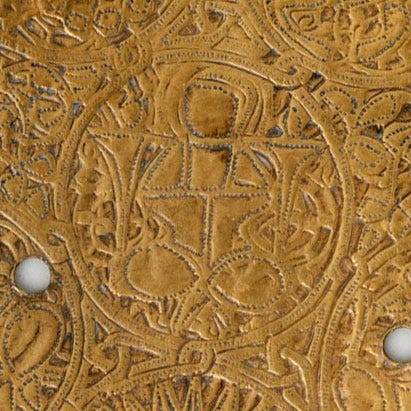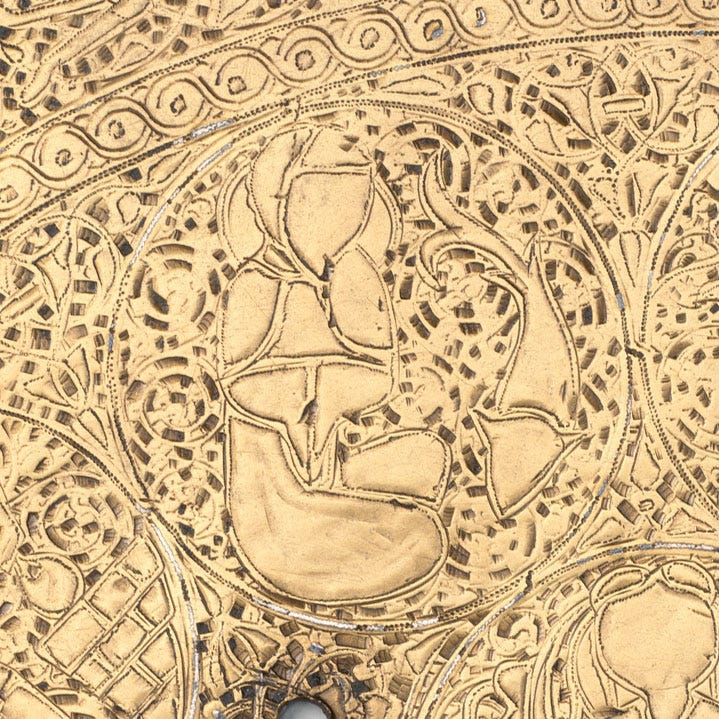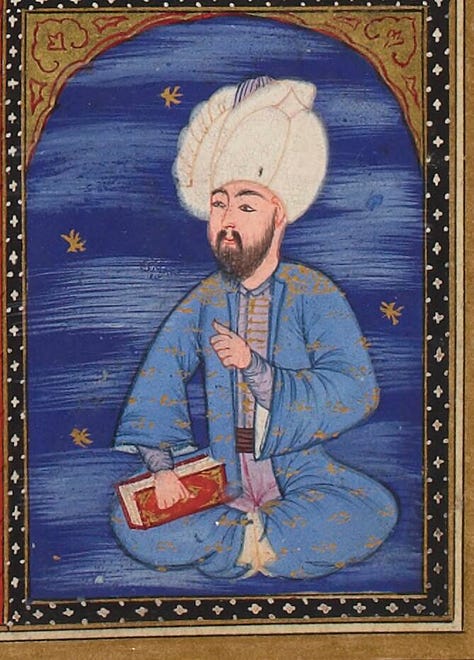The Arabic name for the planet Jupiter is al-Mushtari, the name of an Arabian god personifying this highly visible planet. Al-Mushtari granted wealth, protection and growth, and was the patron deity of merchants.
Another name for this god was Ṣādiq, the Trustworthy. As this is the name of the earlier Phoenician deity Sydyk (from the same semitic root ṣdq meaning “righteousness”), who was equated with Roman Jupiter, and of an even earlier Ugaritic Ṣaduq, I wonder if Ṣādiq was not in fact this deity’s original name, with al-Mushtari an attribute that took over in usage1.
In any case, the planet was the manifestation of righteousness and benevolence, with a highly beneficial influence, and was known as السعد الأكبر al-sa’d al-akbar “the Greater Fortune” (Venus was “the Smaller Fortune”).
Picturing Jupiter (al-Mushtari المشتري)
In the Islamic iconography, Jupiter is not accompanied by any objects or attributes that would indicate his identity. He is depicted as a judge, embodiement of a wise man of reliable judgement, and this is conveyed by his pronounced or even white beard (maturity, experience, wisdom) and large turban (seniority and authority). Most often he’s sitting down, cross-legged and facing the viewer, as if listening, with his hands tucked in his sleeves – though occasionally, for variety, artists have shown him reading from a scroll or making a speech. This can make Jupiter quite difficult to identify at a glance, and for some of the objects below the only way was to proceed by elimination.
Jupiter rules over Sagittarius and Pisces, and though the judge figure is not at all conveyed in the image of the former, he accompanies the fishes more often than expected.
For descriptions of the source objects, please refer to the first post in this series.

























Sigil رسم
The symbol for Jupiter, both on Astrolabe 1 (left) and in Ghayat al-Hakim (right), presents no difficulty, being a monogram of Zeus (Greek equivalent of Jupiter): it’s the letter zeta, more or less altered. The modern symbol ♃ derives from a very variable late medieval (15th c.) form of unclear origin. Claims that it’s “the crescent rising over the cross” are again fantasy2.


To finish, here are some of the correspondences for Jupiter listed in Ghāyat al-Hakīm:
Languages: Greek اليونانية
Cloth: Refined white cloth such as cotton البياض المرتفع كثياب القطن ونحوها
Taste: Sweetness الحلاوة and everything fresh/mellow ليّن and tasty/pleasant عَذْب
Places: Places of worship مواضع التعبّد, purified and clean places المواضع المطهّرة النظيفة
Gemstones: Green gemsزبرجد 3, yellow or white sapphires الياقوت الاصفر والابيض, rock crystal مها, every sparkling/shiny white stone that is beneficient.
Metals: Tin القصدير and zinc التوتيا
Plants: Walnut الجوز, almond اللوز, pistachio الفستق, hazelnut البندق, pine nut الصنوبر, and everything from which the outside is peeled to eat the inside; myrtle آس, spices بهار, and everything that promotes moderation and well-being.
Pharmaceutics: All that are of good quality and a strong pleasant smell, and of perfumes saffron الزعفران, yellow sandalwood الصندل الاصفر, musc المسك, camphor الكافور, mace البسباسة and amber العنبر
Animals: The fine ox slaughtered in offering, almsgiving or tithe, and every clean harmless animal such as the camel الابل or sheep الضأن, and all well-shaped beautiful birds such as peacocks الطواويس, cockerels الديكة, wild pigeons الحمام البرّي, francolins الدُرّاج, and every beneficial insect such as the silkworm دود الحرير
Colours: Green tending towards white الخضرة المائلة إلى البياض
Next stop: Saturn!
Previous posts in this series:
This is just a theory, and it was beyond my scope to do a deep-dive on this topic, but the custom of avoiding a deity’s proper name and instead using attributes to refer to them, is widespread in that part of the ancient world (including ancient Greece). It was certainly the case in the ancient Levant where the habit of referring to the local deity as “the Baal” or “the Baalat” is still causing immense confusion when these attributes (akin to “the Lord” and “the Lady”) are mistaken for names. We still do it today: most people will say “the Prophet” or “the Virgin” rather than use these figures’ given names.
Once more, and for the penultimate time, I point you to part 2 footnote 6.
Zabarjad is today reserved for peridot (chrisolite), but used to also apply to other green gemstones such as beryl, aquamarine or green topaz.










